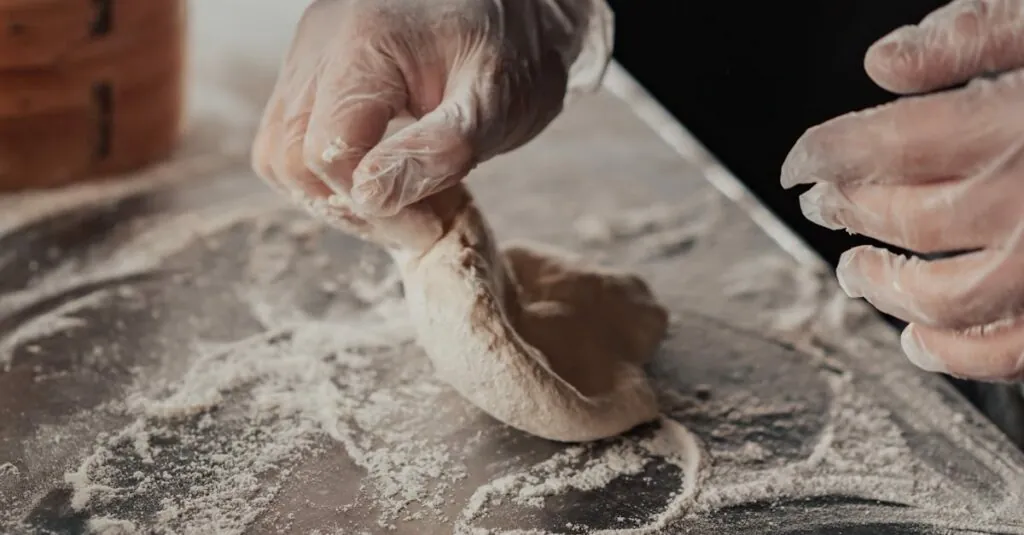Table of Contents
ToggleCooking isn’t just about throwing ingredients in a pot and hoping for the best. It’s an art form, a science experiment, and sometimes, a comedy show all rolled into one. Understanding cooking methods is like having a secret weapon in the kitchen. Whether it’s sautéing, steaming, or flambéing, each technique brings its own flair and flavor to the table.
Understanding Cooking Method Definition
Cooking methods encompass various techniques that influence texture, flavor, and presentation. It’s essential to grasp these methods to enhance culinary skills and outcomes.
Importance of Cooking Methods
Cooking methods significantly affect the final dish. Mastering techniques like grilling or braising can elevate a meal’s flavor profile. Each method influences the ingredients’ natural characteristics, promoting specific tastes and textures. For instance, steaming preserves the nutrients in vegetables while sautéing enhances their sweetness through caramelization. Understanding these methodologies helps cooks tailor their approaches for desired results.
Types of Cooking Methods
Numerous cooking methods exist, each serving unique purposes. Roasting intensifies flavors through dry heat, while boiling quickly cooks food in water. Grilling adds smoky notes, giving a charred texture. Techniques like poaching gently cook ingredients in liquid, maintaining their moisture. Baking uses consistent dry heat, transforming batters into bread and pastries. Sautéing rapidly cooks food in small amounts of fat, allowing flavors to meld. Exploring these varies methods broadens culinary horizons, enabling creativity in the kitchen.
Common Cooking Methods
Various cooking methods transform ingredients into delightful dishes, each offering unique advantages. Understanding these techniques allows for greater culinary creativity.
Dry Heat Cooking
Dry heat cooking utilizes hot air or direct heat to cook food, often enhancing flavor through browning. Methods in this category include grilling, roasting, and baking. Grilling imparts a distinct char flavor due to the direct heat source. Roasting, often applied to meats and vegetables, allows for caramelization, developing rich tastes. Baking, frequently employed for bread and pastries, creates a diverse range of textures. Each dry heat method relies on the Maillard reaction, which adds depth to the dish by creating appealing aromas and colors.
Moist Heat Cooking
Moist heat cooking methods involve liquid or steam, ideal for tenderizing food and preserving moisture. Techniques like boiling, steaming, and braising fall into this category. Boiling cooks food quickly while ensuring it remains moist, making it a popular choice for pasta or vegetables. Steaming, often used for delicate foods, helps retain nutrients and flavors without adding fats. Braising combines moist and dry heat, producing tender meat and rich sauces over time. Each method showcases unique textures and flavors, enhancing the overall culinary experience.
Factors Influencing Cooking Method Choice
Various factors influence the choice of cooking methods, impacting flavor and texture. Understanding these factors allows for enhanced culinary outcomes.
Ingredients
The type of ingredients guides the selection of cooking methods. For instance, delicate ingredients like fish benefit from gentle techniques such as poaching or steaming. In contrast, tougher cuts of meat require methods like braising to tenderize and develop rich flavors. Fresh vegetables often shine when sautéed quickly, while starchy foods like potatoes may be better suited for boiling or baking. Each ingredient has distinct characteristics that dictate the most effective method to achieve the desired result.
Desired Outcome
The desired outcome significantly affects method selection. When aiming for crispy textures, dry heat methods like roasting or frying excel at creating appealing surfaces. Conversely, if tenderness and moisture retention are priorities, moist heat techniques such as braising or steaming become ideal. Flavor intensification through caramelization is often sought after in grilling or sautéing. Knowing the objective—whether it’s a soft stew, crunchy fried dish, or perfectly baked bread—truly dictates which cooking method to apply.
Understanding cooking methods is essential for anyone looking to elevate their culinary skills. Each technique offers distinct advantages that influence the flavor and texture of dishes. By mastering these methods, cooks can unlock the full potential of their ingredients and create meals that are not only delicious but also visually appealing.
Embracing both dry and moist heat techniques allows for a diverse range of cooking styles, enabling creativity in the kitchen. Whether it’s the rich flavors developed through roasting or the delicate textures achieved by steaming, the right cooking method can make all the difference. Ultimately, knowing how to choose and apply these techniques empowers cooks to consistently achieve their desired results.







